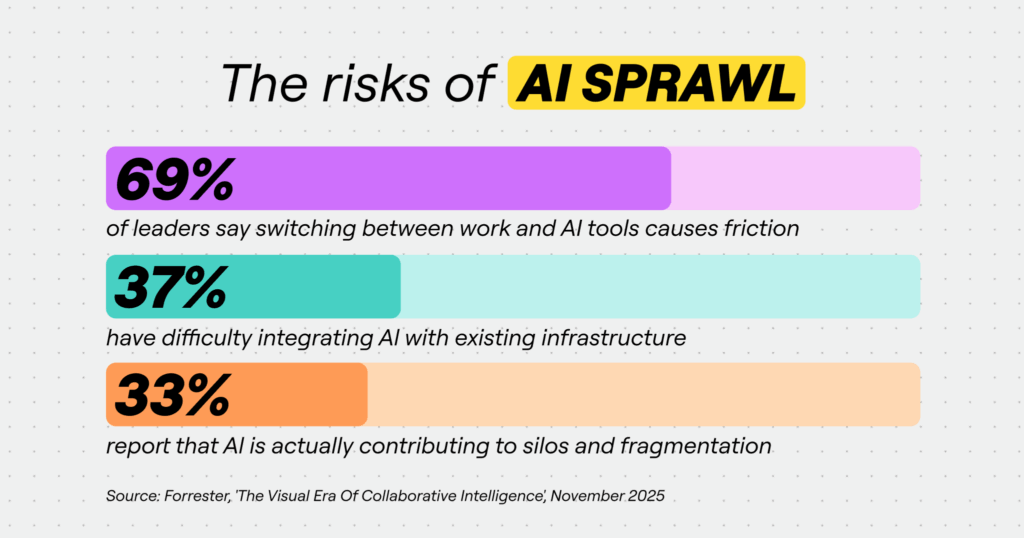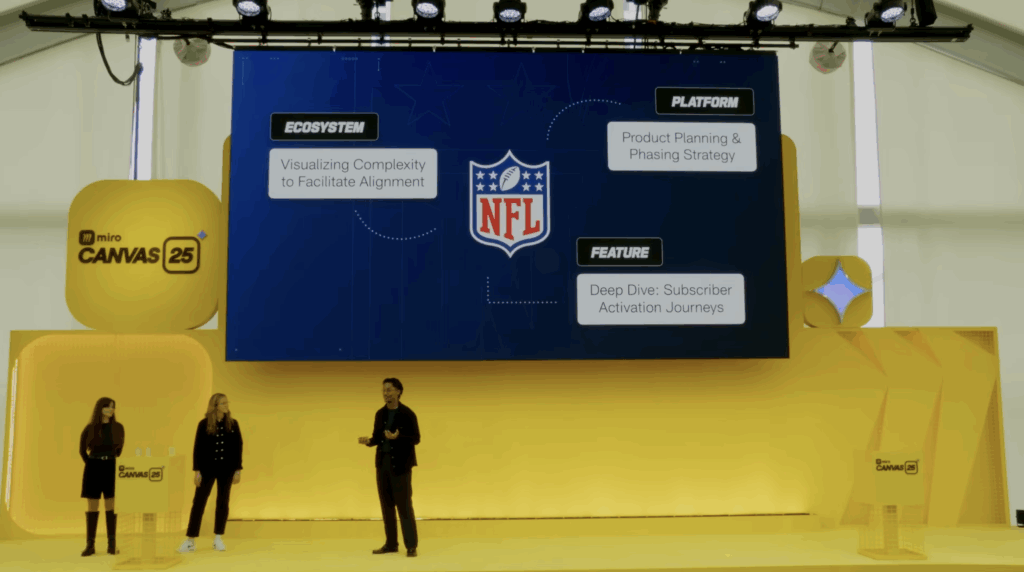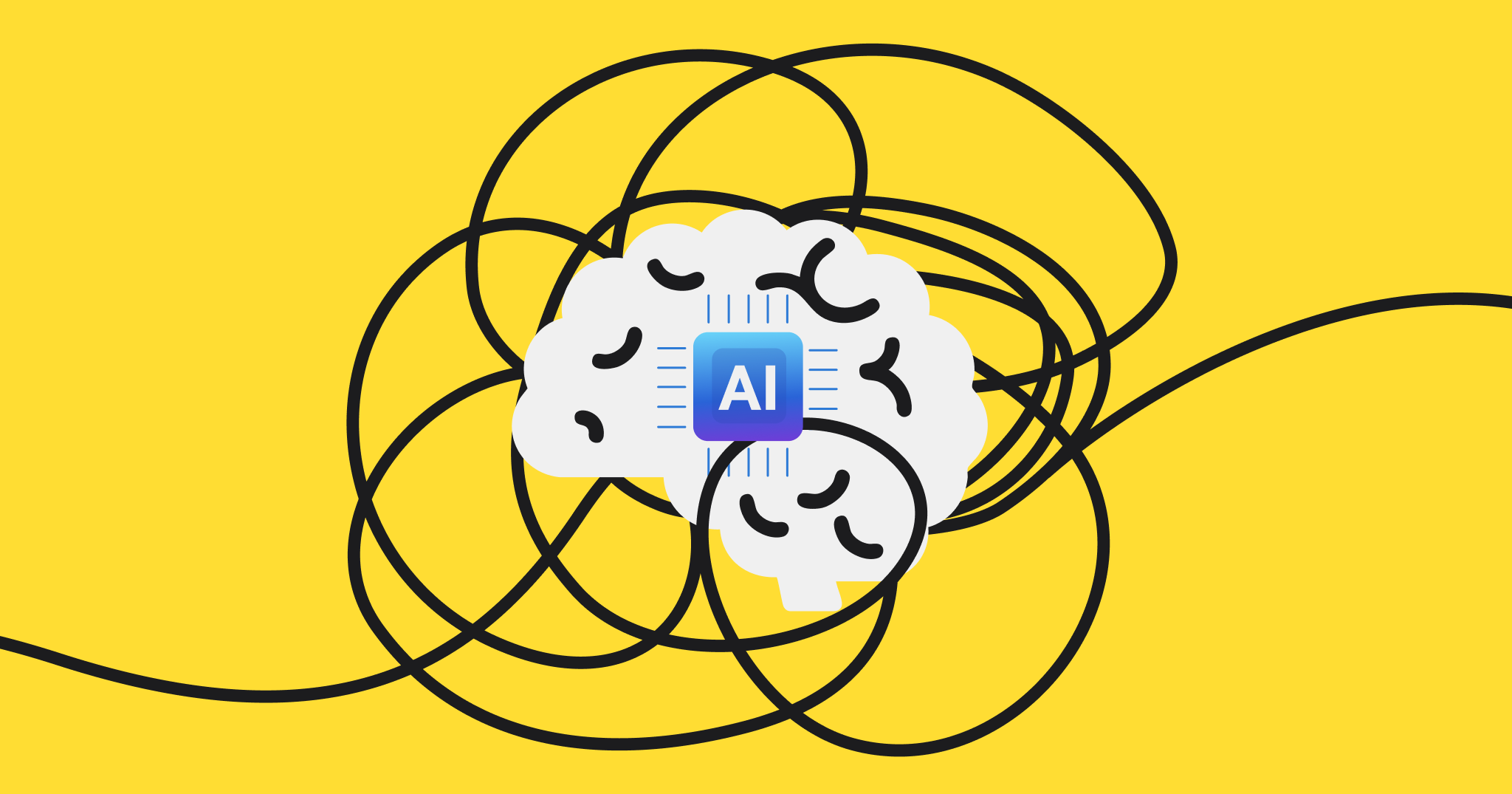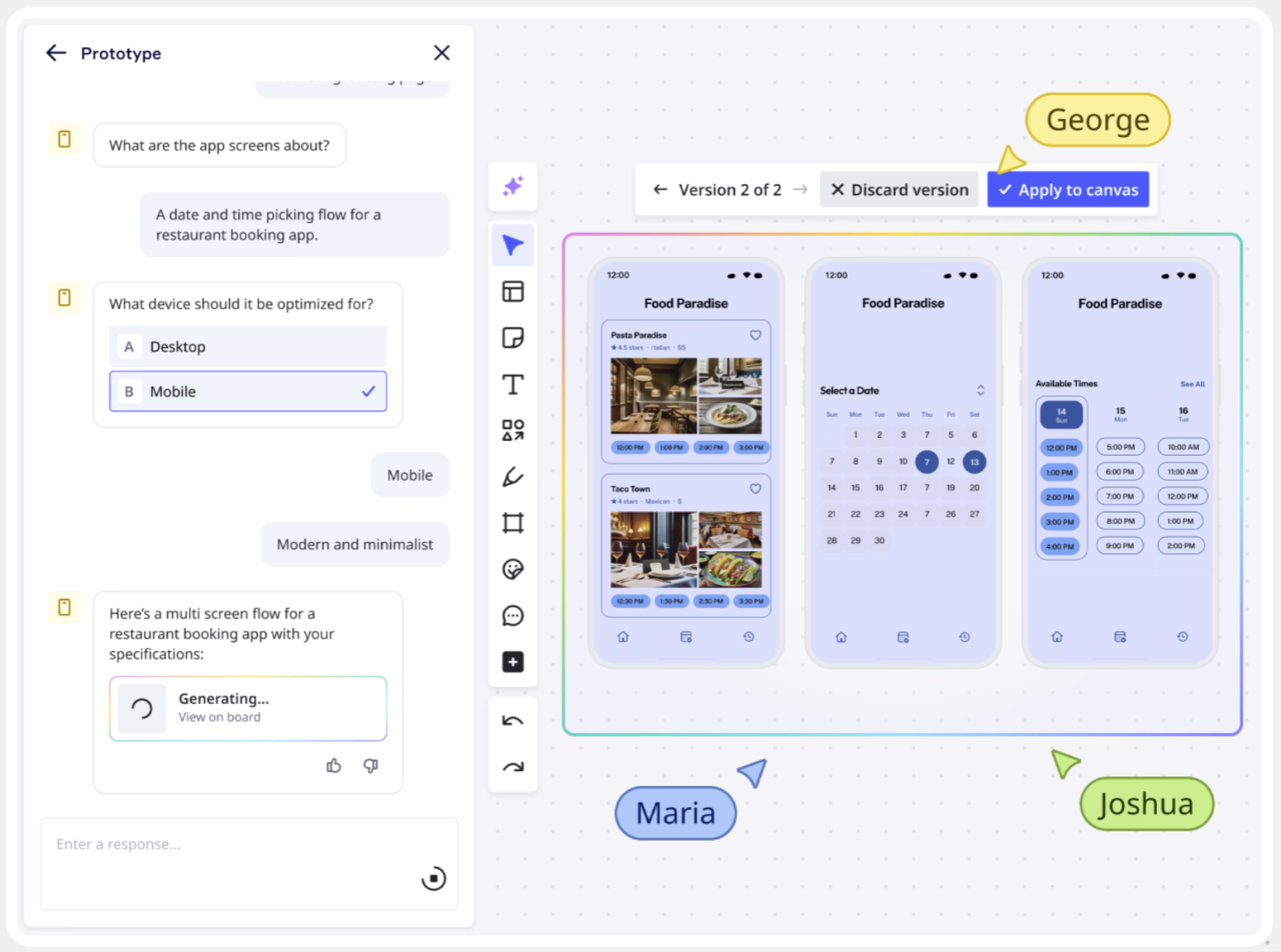Almost every IT leader I talk to is chasing AI. And they should be — Miro’s own survey of 8,000 people across six global markets shows that 63% of employees are already using it.
But here’s the problem: Most companies risk watching their AI productivity gains vanish when they bolt AI onto systems already buckling under too many tools.
This is a clear fork-in-the-road moment. The companies that consolidate now — strategically, not frantically — will unlock AI’s potential. The ones that don’t will introduce even more fragmentation and confusion.
Not only have I seen this scenario play out, as a CTO I’ve been through it myself — and trust me, I made plenty of mistakes along the way. Here’s what I wish I’d known sooner.
When tool sprawl becomes AI sprawl
IT leaders tell me they’re excited about AI boosting productivity. But the data tells a different story. A new Forrester study reveals 69% of leaders say switching between core work tools and AI tools causes friction that interrupts workflows.
That’s not all: 33% told us that AI is actually contributing to silos and fragmentation. The conclusion? We’re piling AI sprawl on top of existing tool sprawl.
Of course, we want to move fast and embrace new technology. But the hard work of consolidation has to happen before AI can deliver on its promise.

Why cost-cutting misses the point
Traditional thinking frames consolidation as a cost-cutting exercise. Cut licenses, reduce spend, move on. But that puts IT leaders squarely in the business of tactical execution.
I’ve seen the best IT organizations reframe the question entirely. They don’t ask, “Which tools can we eliminate?” They ask, “Which platforms help our teams do their best work?”
That shift changes things. Suddenly consolidation becomes about speed, innovation velocity, and cross-functional collaboration. So IT isn’t just seen as a cost center — it’s a strategic enabler building the foundation for everything else the business is trying to do, including AI transformation.
You can see more evidence of this in the Forrester report I mentioned earlier. When asked how they’re planning to measure the impact of AI transformation, only 33% of leaders talked about reducing costs. Instead, they’re focused on things like higher sales conversion (51%), more creativity (47%), and improved collaboration (also 47%).
That’s not an accident. These leaders understand that business impact drives sustainable cost reduction, not the other way around.

AI changes the consolidation playbook
AI transformation gives us the perfect opportunity to rethink how we approach tool consolidation. But we also need to be clear about how to deploy AI so it delivers the most impact.
Today, most AI tools live in silos. Think ChatGPT for brainstorming. Claude for writing. Notion for docs, etc. Each one is powerful on its own, but together they fragment work even further. And here’s the kicker: According to Forrester, 39% of leaders say implementing AI for solo use cases is the top factor limiting returns.
What are they missing? Teamwork. The biggest AI opportunity isn’t individual productivity. It’s collaborative intelligence. But you can’t get there when your AI lives in one place, your project work lives in another, and your documentation lives somewhere else entirely.
Thanks to Forrester, we know that many organizations struggle with this — 37% of leaders have difficulty integrating AI with existing infrastructure. And we know they’re looking for a solution because 83% of leaders tell us they’re ready for a single platform that augments human efforts with AI.
That platform is Miro’s AI innovation workspace.
What acceleration actually looks like
I can tell you what consolidation delivers when done right because I’ve seen it firsthand at Miro and with our customers.
Take GitHub’s recent AI transformation. They weren’t just deploying tools — they were driving cultural change across the entire organization. Their approach? Use Miro to evaluate options, run proof-of-concept trials, and communicate transparently. So they didn’t just hype up AI’s potential; they actually achieved clear results because they knew they were using the technology to solve the right problems.
Or look at the NFL’s digital product team. They’re building experiences for millions of fans while managing one of the most complex schedules in sports. Their secret? Using Miro to visualize problems, bring cross-functional teams into a shared space, and create alignment before executing. That’s the difference between moving fast and moving fast in the right direction.

At EPAM Systems, the Director of Product Management needed to prototype an internal product without a UX designer on the team. With Miro’s AI-powered prototyping, they turned text prompts into professional wireframes that maintained brand consistency and enabled real-time collaborative feedback.
These aren’t just efficiency plays. They’re acceleration plays.
Why Miro is the smart choice for IT
Remember: We’re at a fork in the road. The consolidation decisions you make today will determine whether AI becomes a competitive advantage or just another source of chaos.
The platform you choose needs to do more than reduce tool count. It needs to:
- Embed AI where work happens, not in a separate tool
- Connect unstructured ideation to structured execution
- Enable cross-functional collaboration without forcing everyone into rigid workflows
- Provide enterprise-grade security that doesn’t slow teams down
This is why we built Miro the way we did. AI lives on the canvas where teams already brainstorm, plan, and build. Security is embedded with Enterprise Guard. Everything from roadmapping to goal management to AI transformation happens in one place so teams have a collaborative foundation that’s connected to everything else.
Here’s what you can do right now
The window to consolidate strategically — before AI complexity compounds your tool sprawl — is closing fast.
My advice: Start asking different questions. Not “What can we cut?” but “What foundation do our teams need to work at the speed of their ideas?” Not “How do we reduce costs?” but “How do we enable the business outcomes that justify our technology investments?”
The companies that get this right won’t just survive the AI era. They’ll define it.
If you’re navigating these decisions and want to compare notes, reach out. I’ve been there, and I’m happy to share what I’ve learned.




